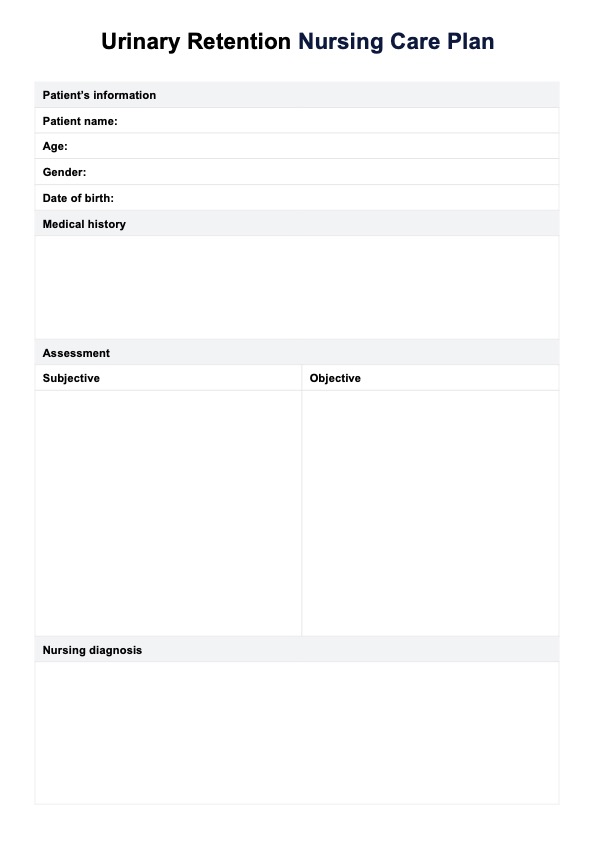Develop a Urinary Retention Nursing Care Plan Template by including sections for assessment, nursing diagnosis, goal setting, interventions, and evaluation specific to urinary retention management.

Urinary Retention Nursing Care Plan
Effectively manage urinary retention with our Urinary Retention Nursing Care Plan template. Assess, plan, and implement personalized care to improve patient outcomes today.
Urinary Retention Nursing Care Plan Template
Commonly asked questions
Urinary Retention Nursing Care Plan Templates are used to manage patients with acute or chronic urinary retention, particularly in postoperative care and long-term care settings, and individuals with underlying medical conditions.
Healthcare professionals use these Urinary Retention Nursing Care Plan Templates to assess, plan, implement, and evaluate care for patients with urinary retention, focusing on individualized patient needs.
EHR and practice management software
Get started for free
*No credit card required
Free
$0/usd
Unlimited clients
Telehealth
1GB of storage
Client portal text
Automated billing and online payments











